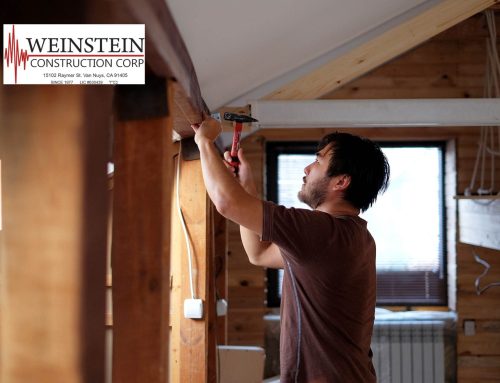Concrete can last for several decades without much maintenance, which is a key reason why it is chosen as a commercial building material. Regular inspections help to identify problems early in order to avoid costly structural concrete crack repairs. Here are important points to remember about the use of seismic retrofitting for buildings with concrete tilt-up walls and how cracks can be addressed.
Retrofitting to Plan for Earthquakes
The occupancy of a building in a region with a history of earthquakes entails heavy responsibility. Structures built before 1975 are vulnerable to earthquake damage and need to be reinforced with seismic retrofitting.
It is best to make the building as safe as possible, which ensures that it can be upgraded to meet modern requirements that take into account earthquake protection. Keep in mind that the future of earthquake insurance is unclear due to heavy losses in the past. Since 2005, earthquake insurance has more than tripled.
There are a number of reasons for considering this type of renovation, including insurance and financing concerns. This will certainly reduce the chances of coping with injuries and lawsuits. Owners who are aware of structural vulnerabilities in the earthquake zone that face serious negligence litigation.
Increase Building Value
Another reason for investing in retrofitting is that it boosts the value of your building and improves its asset status. By modernizing the seismic safety facility, you help narrow the search for future buyers who want turnkey solutions. Building wellness is a vital part of the operation as it impacts business continuity. The more power you bring to the house, the less the next owner has to think about repairing it.
Repairing Cracks
The structural repair of concrete cracks by epoxy injection is a common solution for the rehabilitation of buildings. Old designs should be inspected for cracks that may cause water and air leakage. Roof condensation and overloaded beams that are soaked in moisture may degrade concrete walls if ignored. We can also keep cracking through the use of epoxy. The approach must be adapted to the condition of the house. It may require the addition of tensioned wires, steel or wood to the existing structure.
Planning a Seismic Retrofit
The seismic retrofit plan begins by deciding what kind of hardware will be used for the project. Options involve adding roofs to wall anchorages, continuity connections and other steps. It may also involve nailing roofs, shearing walls and reinforcement of columns.
For more information on structural concrete crack repair, please contact Weinstein Construction today. With our extensive experience in seismic retrofitting, we know how to identify the right repair and reconstruction techniques.















